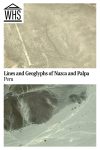Lines and Geoglyphs of Nazca and Palpa
By Martha Knight
What are the Lines and Geoglyphs of Nazca and Palpa?
The Lines and Geoglyphs of Nazca and Palpa (typically just called the “Nazca Lines,” and sometimes spelled as “Nasca”) are large-scale geoglyphs: straight lines and figurative drawings on the floor of the Nazca desert in Peru, made between 500 BC and AD 500. They were created by removing the top layer of red-coloured pebbles to expose the paler ground beneath. They’ve been preserved for so long because of the distinct lack of rain in the area.
Disclosure: This article contains affiliate links. Making a purchase through an affiliate link will mean a small commission for this website. This will not affect your price. Privacy policy.
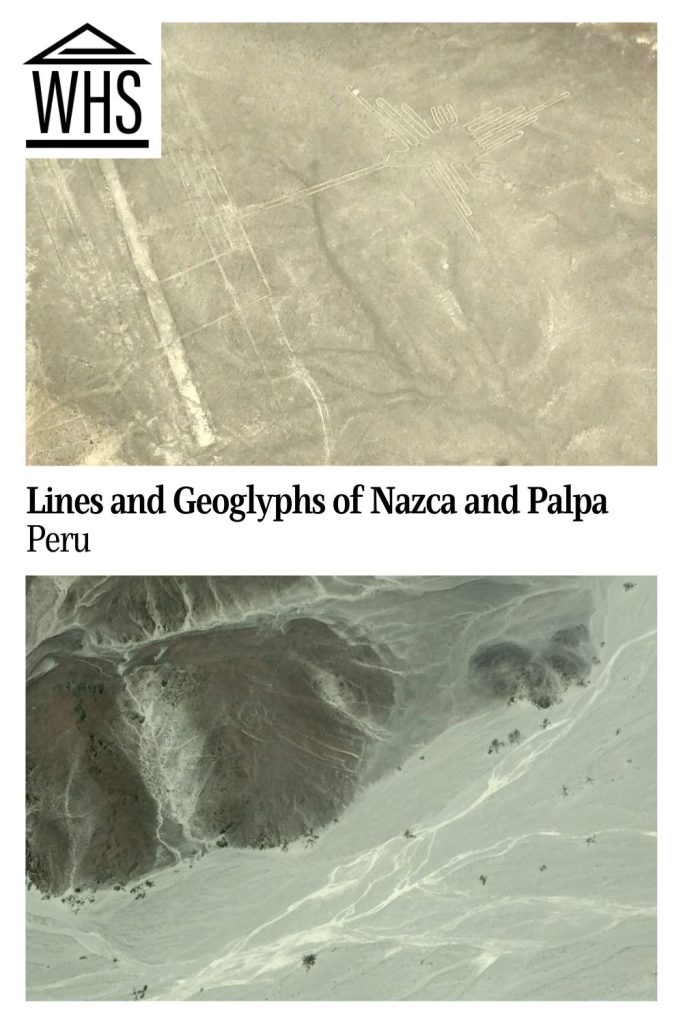
There are two categories of glyphs: the first is representational, depicting a variety of natural forms including animals, birds, insects, and other living creatures. The second group comprises the lines, which are generally perfectly straight lines that cross the desert with astounding accuracy. The geoglyphs are thought to have had a ritual astronomical function.
Why are the Nazca Lines a UNESCO World Heritage site?
The Nazca Lines are unique in the magnitude, diversity and size of the geoglyphs – they are unlike any others around the world, and it is astounding that they have remained preserved for approximately two millennia!
They also have enormous historical significance, giving an insight into the Nazca culture and capabilities. As UNESCO says, they “are an exceptional testimony of the culture and magical-religious tradition and beliefs of the societies that developed in Pre-Columbian South America.”
For more information, check the UNESCO listing for the Nazca Lines.
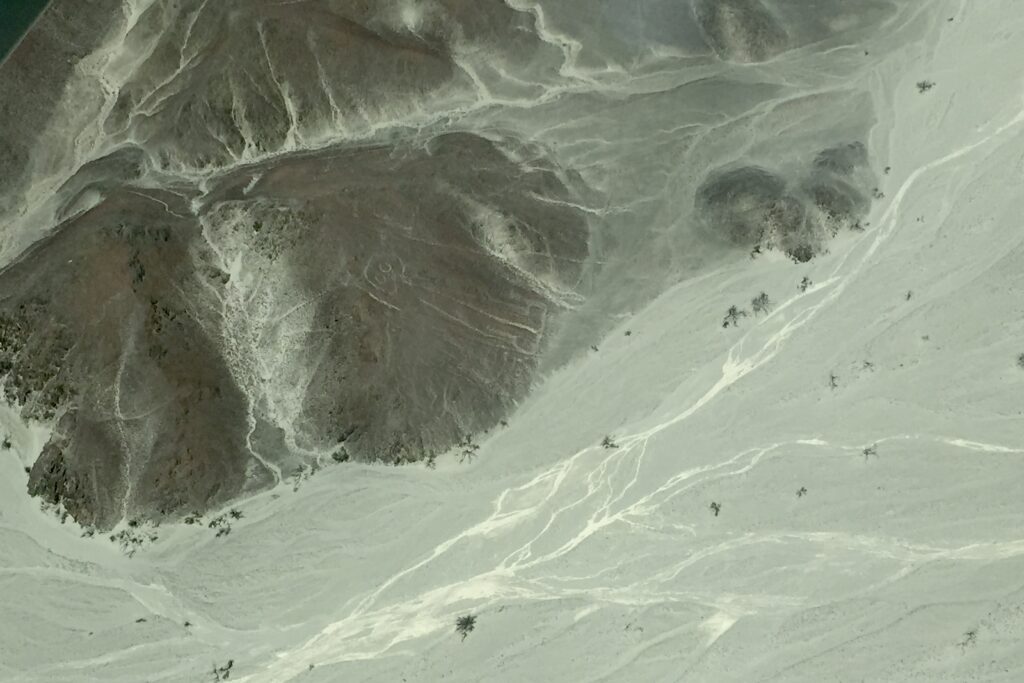
What can you expect on a visit to the Nazca Lines?
It depends a lot on how you visit them. There are two main ways to see the Nazca Lines: by foot and by plane.
By foot: The Nazca Lines Observation Tower near the town of Nazca costs four soles to climb. From here, you can see three of the representational geoglyphs: the Tree, the Hands and the Lizard. So the upside of this option is that it is inexpensive – BUT you can only see a tiny fraction of the geoglyphs.
By plane: The best way to see a variety of geoglyphs, including lines and representational figures like the Whale, the Man and the Hummingbird, is to take a scenic flight over the Nazca Lines. Flights operate from Nazca or Pisco. However, these flights are not for the faint-hearted! The flights can be challenging because the small planes dip to each side to enable everyone on board to see each geoglyph, which can easily lead to air sickness. Read more on what to expect on a Nazca Lines flight.
Are the Nazca Lines worth visiting?
I personally think the lines are well worth visiting – there’s just nothing else like them anywhere in the world! And also, the surrounding deserts and mountains are just spectacular, so fans of dramatic landscapes will love it that little bit more.
However, if you do get air sick, you might want to choose to see the lines by foot, or at least to choose a flight that departs from Nazca, which has shorter flight routes.
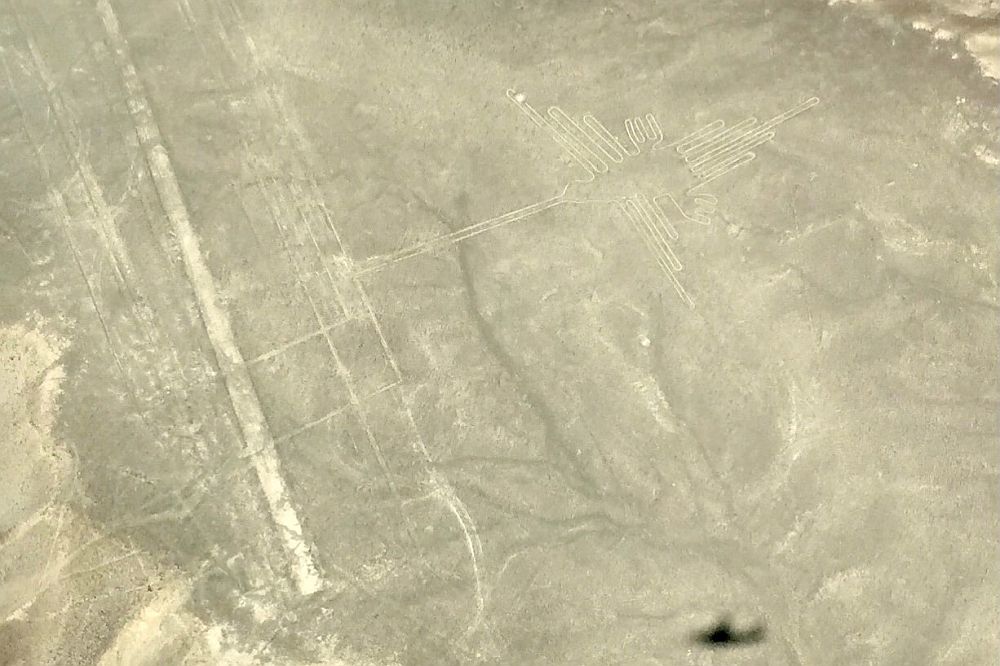
If you see the Lines by foot, it can be a fairly quick stop at the observation tower, which is located on the Panamericana Sur road. If you’re doing a Nazca lines flight as a day trip from Lima, allow a day to do the travel, the flight and another stop or two along the way. For example, you could also visit the sleepy fishing community of Paracas on the coast.
Use the map below to find accommodations:
Tips for visiting the Nazca Lines
If visiting by foot, bring water and a hat to protect you from the sun, and don’t wander into the desert alone!
If taking a scenic flight:
- Book ahead;
- Take air sickness medication an hour ahead of the flight taking off;
- Bring a good camera, ideally with a zoom, to capture these amazing geoglyphs.
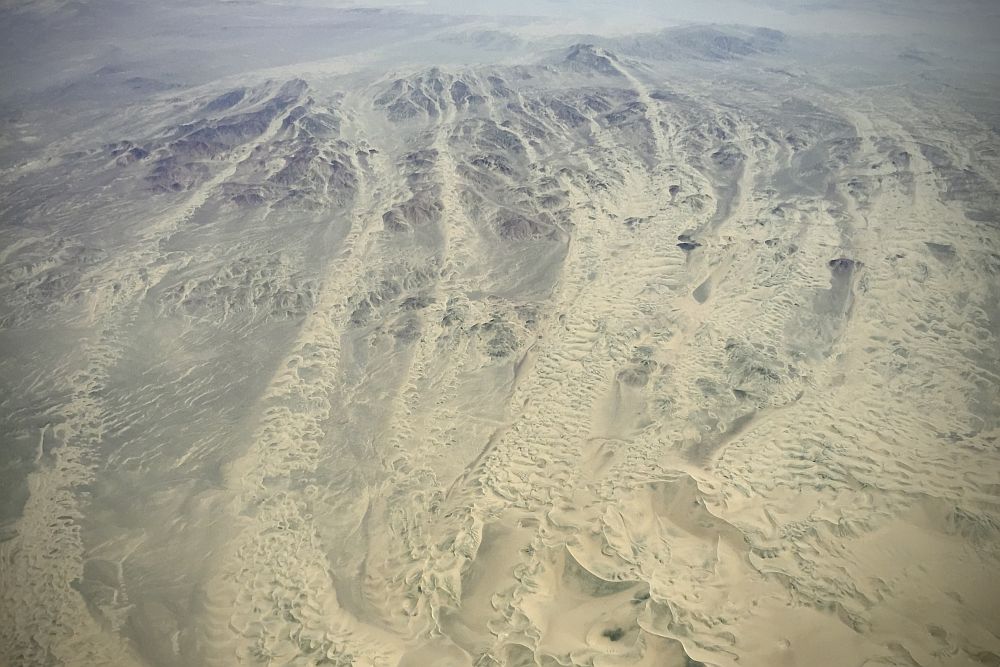
If you’re going to be in Peru anyway, think about also visiting Machu Picchu and the City of Cuzco UNESCO sites as well.
Where are the Nazca Lines?
The Nazca Lines are spread out over an area approximately 450 square kilometers (174 square miles) between Nazca and Palpa.
The Nazca Lines Observation Tower (Mirador de Las Lineas de Nazca) is located 26km (16 miles) north of Nazca on the Panamericana Sur road, and can be reached by car (in 25-30 minutes) or via the Peru Hop bus.
The airport details for the scenic flights are:
- Pisco’s Capitán FAP Renán Elías Olivera Airport is about ten minutes’ drive from the town of Pisco;
- Nazca’s Aerodromo Maria Reiche is on the Panamericana Sur and is just ten minutes from Nazca by car.
For more information about the Nazca Lines, see Peru’s official tourism website.
Have you been to the Nazca Lines? If so, do you have any additional information or advice about this UNESCO World Heritage site? Please add your comments below!

